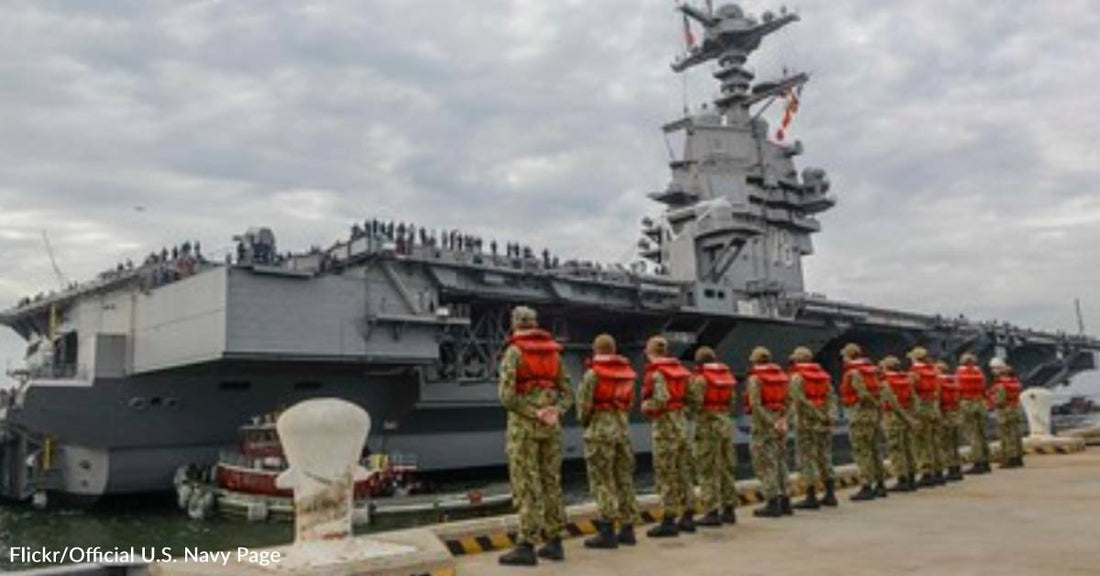What's The Difference Between the Gerald R. Ford-Class and The Nimitz-Class Carriers?
Dan Doyle
The centerpiece of naval warfare today is the carrier and its strike group. These modern carriers project an immense amount of power anywhere in the world. They do this with speed and efficiency. At present, the United States Navy has 11 active carriers. They are made up of Enterprise- and Nimitz-class carriers, as well as carriers from the newest class, the Gerald R. Ford class.
These carriers are extremely valuable assets, as they are extremely effective deterrents to any potential adversaries. They are designed to bring powerful air support to U.S. and coalition forces afloat, in the air, or on shore, and they can do this rapidly, anywhere in the world.
The Nimitz- and Ford-class aircraft carriers are presently the largest warships in the world. The USS Gerald R. Ford (CVN 78) is the first of its class and is now on active duty. There are two more being built at this time. They are the USS John F. Kennedy (CVN 79) and the Enterprise (CVN 80). There is one more on order, the USS Doris Miller (CVN 81).
The latter Ford-class carrier is to be named after Doris Miller, the first African American to be awarded the Navy Cross in WWII. He was a Mess Attendant 2nd Class when the ship he was serving on at Pearl Harbor was hit by bombs on December 7, 1941. During the attack, he helped several of his wounded shipmates and manned an anti-aircraft machine gun, for which he had no training. Despite the lack of formal training on the anti-aircraft machine gun, he shot down 4-6 of the attacking Japanese planes. Miller would be killed in action later in the war when the ship he was then serving on, the escort carrier USS Liscome Bay, was sunk by a torpedo near the Gilbert Islands.
The nuclear-powered Nimitz- and Ford-class carriers are designed for a 50-year service life with a single mid-life refurbishing necessary during that long life. But there are some significant differences between these two classes as well.
The USS Gerald R. Ford has two reactors that can generate 600MW of electrical power vs. the Nimitz-class ships that have one reactor that produces 200MW of electrical power. Another major difference is that the Gerald R. Ford has an electromagnetic catapult system that can generate 25% more sorties (flights) than the Nimitzes' steam-powered catapult system. The Ford also has a dozen electromagnetic weapons elevators, which makes the movement of planes and armaments much faster and more efficient. This, again, makes the Ford capable of arming and launching more aircraft more quickly.
 Photo: GetArchive/Defense Visual Information Distribution Service
Photo: GetArchive/Defense Visual Information Distribution ServiceThe Ford-class aircraft carrier USS Gerald R. Ford (CVN 78) and the Nimitz-class aircraft carrier USS Harry S. Truman (CVN 75) transit the Atlantic Ocean June 4, 2020.
A third difference between the Nimitz- and Ford-class carriers is that the USS Gerald R. Ford is equipped with technologically more advanced radar systems. It has an AEGIS-style X-Band AN/SPY-3 Aegis radar and S-Band Volume Surveillance Radar, capable of search, track, and multiple missile illumination. This makes it possible to detect incoming aircraft and missiles at a greater distance.
Lastly, the Gerald R. Ford also has more sophisticated defensive armaments. It has two MK.29 missile launchers with eight ESSMs each. It has two Rolling AirFrame missile launchers, as well as four Phalanx Close-In Weapons systems for defense against attacking aircraft, missiles, and small ships.
Because Gerald R. Ford-class aircraft carriers are so new and so much more sophisticated than the Enterprise and Nimtz-class carriers, they have experienced a number of glitches in the various high-tech systems that have been deployed in the design. Those have been worked out, and the USS Gerald R. Ford has recently been deployed fully to the fleet and is on active duty. Those improvements will, of course, be incorporated into the two Ford-class carriers currently under construction and the third that is on order. These Ford-class carriers will eventually completely replace the former Enterprise- and Nimitz-class carriers.
These massive, fast, powerful ships will continue to be the centerpiece of the U.S. Navy’s mission for decades to come. There is nothing quite like a U.S. Navy Carrier Strike Group to protect the freedom of the seas and to deter potential adversaries from threatening that freedom.





